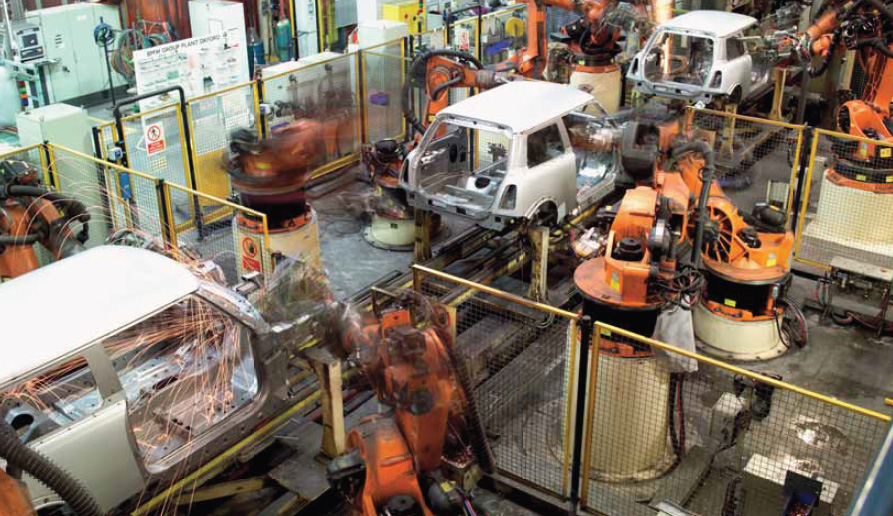
Alternative energy has yet to provide enough power to run a factory, but when it comes to cutting operating costs it’s worth looking at what can be improved on the factory floor
Children’s programmes around the world show how to make all kinds of decorations and toys from stuff lying around the house, things that would have otherwise ended up in the bin. There is a lesson there for manufacturing plants. Like many things we bring into our homes, energy is not necessarily spent the first time it is used, and harnessing its potential a second time can dramatically reduce plant running costs.
When looking to minimise energy outlay, a common first line of defence comes with the energy brokers and consultants that often manage to reduce bills by negotiating deals with energy suppliers. But that’s a bit like rearranging the deckchairs as the ship goes down; the ultimate answer is to use less energy. Alternative energy sources, wind power, solar and heat pumps in their various forms are all worth investigation, but before looking to these solutions, companies are advised to try implementing best practice policies with current energy systems.
Air today, gone tomorrow
The first thing almost every adviser suggests is to look at the compressed-air system. A factory may have the most up-to-date equipment, with soft-start motors and zoned lower-output compressors, but a single leak in the system can considerably reduce efficiency. Between 12 and 15 per cent of all industrial electricity across Europe is consumed by compressed air systems, with many companies simply unaware how much their system is costing – and in many cases only half of the generated air is actually put to effective use. According to energy consultancy N2O2, the remaining is lost through leakages, (25-30 per cent), ‘artificial demand’, such as unnecessarily high operating pressures (10-15 per cent), and other ‘inappropriate uses’ – activities that can be performed better by other equipment. A 200hp system, operating all year (8,760 hours) at five cents/kWh would cost $70,000 annually. A 2500hp set-up with energy costs of $1,000,000 could translate to the company wasting $500,000 a year.
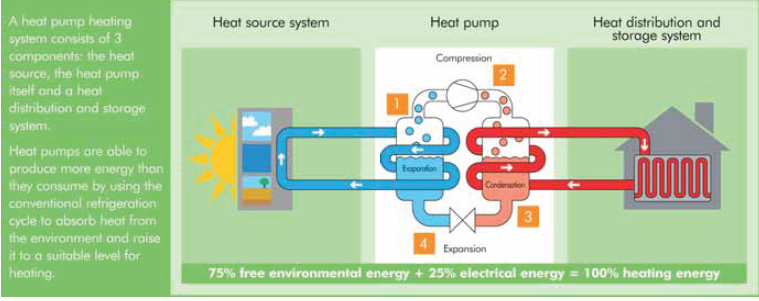
Efficiency first
Located in Charlotte, North Carolina, N2O2 has done work for the North American divisions of Michelin, BMW and Toyota. “Energy is only part of the story,” says Ed Borkey, the company’s General Manager. “It’s about total operating costs, which include cooling, water, sewer and chemical treatment, maintenance, repair, parts, rentals, labour, depreciation and capital. That list is important but the items in it only add up to 30 per cent of running costs (excluding labour); energy is typically 70 per cent.” More positively, improvements don’t necessarily have to cost a fortune and returns on such investment can be appreciated almost immediately.
“The potential savings in systems up to 1,000hp are typically 20 to 30 per cent – which gives an ROI of between six and 18 months,” says Borkey. But those savings can only be achieved through a comprehensive review and strategy implementation. “We are typically called in to undertake air audits because of problems in the system, but they get energy solutions, too. Our clients always ask to pay through energy savings, which we are fine with.”
According to Borkey, the auto sector still has big, centralised compressor systems providing air to the whole factory, rather than zoned systems with smaller motors. The larger, all-encompassing systems make things a bit difficult. “The relationships between rate of flow, pressure and pressure drop are difficult to analyse in a system, higher pressure becoming the solution to all problems at the cost of exponential increases in energy,” he says. But those same hidden (or unanalysed) inefficiencies can deliver big returns if addressed. “The projected savings for one of our clients – a large tyre manufacturer, with plants all over the US and elsewhere – amounted to nearly $500,000, in just two American facilities: 28 per cent ($226,000 a year) in one and 24 per cent ($223,000 a year) at the other.” Techniques that brought about the return included removing unnecessary equipment, ensuring correct fit of parts, updating where necessary and positioning the flow controller for optimum operation. “Even in the auto industry, air systems vary from plant to plant and that’s for a host of reasons. We’ve done 15 plants for Michelin Tyres and, although they have some similarities, they each require different solutions.”
Made to measure
Also in the air arena, Atlas Compressors says that it’s important to use the appropriate technology – screw compressors aren’t ‘one size fits all’ any more than pistons or other methods. For small flows, piston compressors are recommended: screw units are appropriate for up to around 10kW, whereas from 10 to 50kW, double-tooth rotary equipment is the machinery of choice. Rolling screw technology is good for upper-mid-range installations and from 400 to 20,000kW, centrifugal units offer the required efficiency. But there are grey areas, with centrifugal units needing to be constantly loaded, for example. Below 400kW, screw technology is a perfect fit for variable speed drives (VSD), which have been touted as something approaching the holy grail of compressor technology but, at the top end, they actually use more energy than their constant-load cousins. This means that if a company fixes all its leaks, seals off redundant outlets and circuits, and adapts pipes and hoses to the shortest practical distance, it may find itself able to replace three full-load compressors with just two but with no energy savings at all if they’re big VSDs working flat out. Of course, there are alternatives when using compressed air to power drills, spanners and screwdrivers on an assembly line. The BMW plant at Cowley, near Oxford, producing the Mini, is relatively quiet: the raucous sound of compressed-air driven hand tools largely absent due to the company installing electricallyoperated equipment. Individually, these may consume more power when in operation, but they’re not in constant use, whereas a compressed air system supplies constant power, whether it is needed or not. Supply on demand can be less expensive – plus it makes for a quieter working environment.
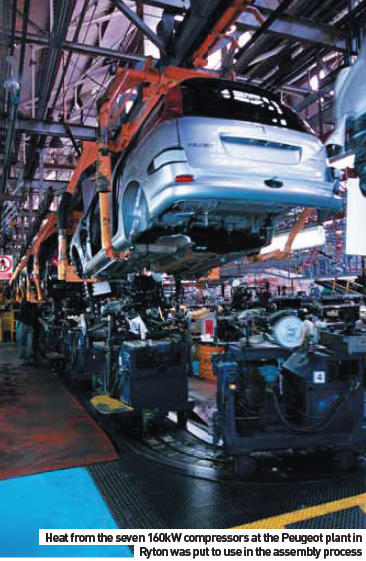
Heat harvesting
A guaranteed by-product of machinery is heat. Keeping equipment within recommended operating temperatures is clearly a priority, with removal of that heat to control ambient temperatures a close second. But generated heat is a resource in itself; if it’s allowed to simply escape, then expensive energy is wasted in simply warming the outside atmosphere. Instead, heat energy can be harnessed to contribute to reduced energy bills, rather than adding to them. Using recovered heat to preheat water for manufacturing or industrial processes, even by a couple of degrees, can make a big difference. Another example of reusing this otherwise wasted energy source was demonstrated at the Peugeot plant in Ryton, UK, where heat from the plant’s seven 160kW compressors was used to dry the interiors of cars failing the water ingress test. “In Germany, heat recovery through tapping into the oil circulation system is a big thing,” says Martin Waller, Technical Services Manager with ABAC UK, designers, manufacturers and suppliers of compressors to industrial, professional and consumer customers. “We offer heat exchangers that provide hot water for employees effectively free of charge, the energy having already been paid for. We make a point of talking about heat recovery.”
KBC Energy Services (formerly Linhoff March) is a consultancy company based in Northwich, UK, which has worked with Chevron Texaco and Total at their Milford Haven and Grimsby refineries, amongst various other companies around the world. Key to its operations is identifying heat-recovery opportunities in such areas as steam and gas turbine generators. According to the company, five and ten-year energy strategies may involve capital expenditure, with all ROI likely to be longer term. That said, with oil and subsequent utility costs soaring, some degree of urgency is welcomed by customers. But it is those higher costs that tend to bring even significant capital expenditure projects within two-year ROI time horizons.
According to Allan Rudman, KBC’s Vice President of Energy Services, the company bases its analyses on so-called ‘pinch technology’, involving the development of composite curves for cold streams which need heating, and hot streams which need cooling down. The composite curves for the two streams are plotted, the point at which they come closest to intersecting being the pinch point. Ideally, the difference should be zero – meaning all heat is being used to maximum efficiency – but that would require a heat exchanger of infinite size and equivalent capital resources. Instead, realistic and achievable targets for temperature difference are set within cost and practical boundaries.
Pinch point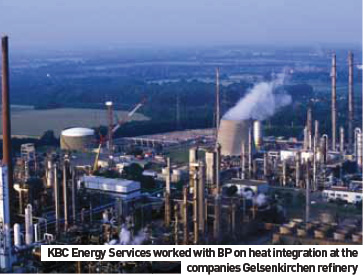
“About half of all energy opportunities can be captured through no- and low-cost initiatives, such as furnace excess oxygen reduction programmes, heat exchanger and rotating equipment, cleaning programmes and improved turbine and motor switching management,” says Rudman. About half of all proposals require capital expenditure but improved measurement and stewardship, better process metrics and equipment utility system optimisation contribute the remainder. The company has been involved with some largescale projects. BP Gelsenkirchen, for example, identified immediate opportunities in heat integration and other, smaller projects. In 2006 money, the changes are projected to save more than $85m and reduce CO2 emissions by around a million tonnes a year. The total investment is estimated at $80m over five years, but with savings returns expected for years to come. As the plant is involved in refining and petrochemical processes, it’s not only reducing costs of vehicle fuels but plastics as well.
How a building is heated also plays a part. Most commonly, heated air is passed through metal HVAC ducts, transferring heat to the space and mechanism through which it passes. Air that may have left the boiler at tropical temperatures loses a lot of energy in transmission and the choice is either to re-heat it along the way, or to conduct it more efficiently, the latter being the option of choice. As such, AM Group’s Hummer production plant at South Bend, Indiana, installed approximately 120,000 square feet of two-inch fibreglass duct material from Knauf Insulation. With dual-service ducts carrying both air heated by in-line gas burners and cooling water chilled to 8°C, the insulation dramatically improved efficiency, proving more robust in construction and reducing maintenance requirements. Further, the insulation properties of the material greatly reduced condensation build-up and the associated problems, previously a troublesome side effect of Indiana’s warm summer temperatures.
In an effort to cut costs, Jaguar worked with CompAir to analyse its system at its Whitley Engineering Centre. While the company didn’t require a constant supply of compressed air, it had to be available on demand. Having compressors that were running at the same output, all the time, a VSD installation was a bit of a no-brainer. Two fi xed-speed machines were also required, with the whole system being managed by a SmartAir controller, monitoring demand and selecting the appropriate combination of compressors to meet requirements. Base supply is provided by a speed-regulated compressor, with the VSD there to meet variations. The second fi xed-speed unit comes in only at times of peak demand.
From lean to green
Lean manufacturing also has a part to play in reducing energy costs. The less space you use in production, the less you have to spend heating and illuminating under-utilised space. Incorporating JIT deliveries into production means stock doesn’t have to be held in warehouses, and if you don’t have a warehouse, you don’t need to heat it. The same goes for finished goods inventory – build to order and there’s no need for storage. But even once the production footprint has been optimised, the doors all closed (where they can be), low-energy lights switched off when not needed, computers switched off rather than left on standby, and the heating has been turned down a degree or two (with a typical saving of 10 per cent a year), there is still more to be done. For example, it’s worth investing in an analysis of airflow, so that the appropriate heating method is employed. Radiant heating only heats people and objects rather than the surrounding air, while other areas may require warm air and so a different heating solution. Whatever the choice, the combination of surveys and efficient, tailored heating installations have delivered savings of up to 65 per cent, according to Ambi-Rad, the UK’s largest manufacturer of heating equipment. That’s an astonishing number, indicative of poor planning and execution of heating installations. But with higher utility costs, even small improvements in efficiency can amount to worthwhile savings.
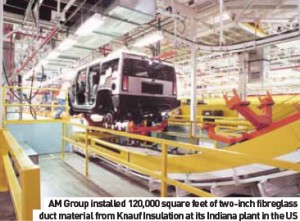 There is a danger, however, in that energy efficiency initiatives can suffer from the ‘been there, done that’ syndrome. It’s surprising what damage that can do; after only a comparatively short time, machinery slips away from its optimum calibration and all the positive work is undermined. In response to this, American company, Ecology & Environment, has introduced the ‘Green Meter’, a technology used to measure the performance of heating, lighting and ventilation in buildings on a pre-set frequency. It can be calibrated to measure timeframes from five minutes to several hours, the results being used to ensure that the systems are delivering to the expected standards. Ecology & Environment has representation across the world and can remotely connect to its Green Meters, monitor their data and informing customers as to their efficiency rating. Additionally, the system can be set to e-mail employees to warn them if the office heating is going to be switched on or off, giving everyone time to take appropriate action, with something as simple as just closing windows.
There is a danger, however, in that energy efficiency initiatives can suffer from the ‘been there, done that’ syndrome. It’s surprising what damage that can do; after only a comparatively short time, machinery slips away from its optimum calibration and all the positive work is undermined. In response to this, American company, Ecology & Environment, has introduced the ‘Green Meter’, a technology used to measure the performance of heating, lighting and ventilation in buildings on a pre-set frequency. It can be calibrated to measure timeframes from five minutes to several hours, the results being used to ensure that the systems are delivering to the expected standards. Ecology & Environment has representation across the world and can remotely connect to its Green Meters, monitor their data and informing customers as to their efficiency rating. Additionally, the system can be set to e-mail employees to warn them if the office heating is going to be switched on or off, giving everyone time to take appropriate action, with something as simple as just closing windows.


































